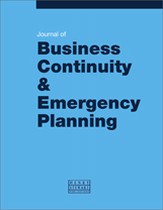Targeted assets risk analysis
Abstract
Risk assessments utilising the consolidated risk assessment process as described by Public Safety Canada and the Centre for Security Science utilise the five threat categories of natural, human accidental, technological, human intentional and chemical, biological, radiological, nuclear or explosive (CBRNE). The categories of human intentional and CBRNE indicate intended actions against specific targets. It is therefore necessary to be able to identify which pieces of critical infrastructure represent the likely targets of individuals with malicious intent. Using the consolidated risk assessment process and the target capabilities list, coupled with the CARVER methodology and a security vulnerability analysis, it is possible to identify these targeted assets and their weaknesses. This process can help emergency managers to identify where resources should be allocated and funding spent. Targeted Assets Risk Analysis (TARA) presents a new opportunity to improve how risk is measured, monitored, managed and minimised through the four phases of emergency management, namely, prevention, preparation, response and recovery. To reduce risk throughout Canada, Defence Research and Development Canada is interested in researching the potential benefits of a comprehensive approach to risk assessment and management. The TARA provides a framework against which potential human intentional threats can be measured and quantified, thereby improving safety for all Canadians.
The full article is available to subscribers to the journal.
Citation
Bouwsema, Barry (2013, March 1). Targeted assets risk analysis. In the Journal of Business Continuity & Emergency Planning, Volume 6, Issue 3. https://doi.org/10.69554/DEZK7954.Publications LLP
